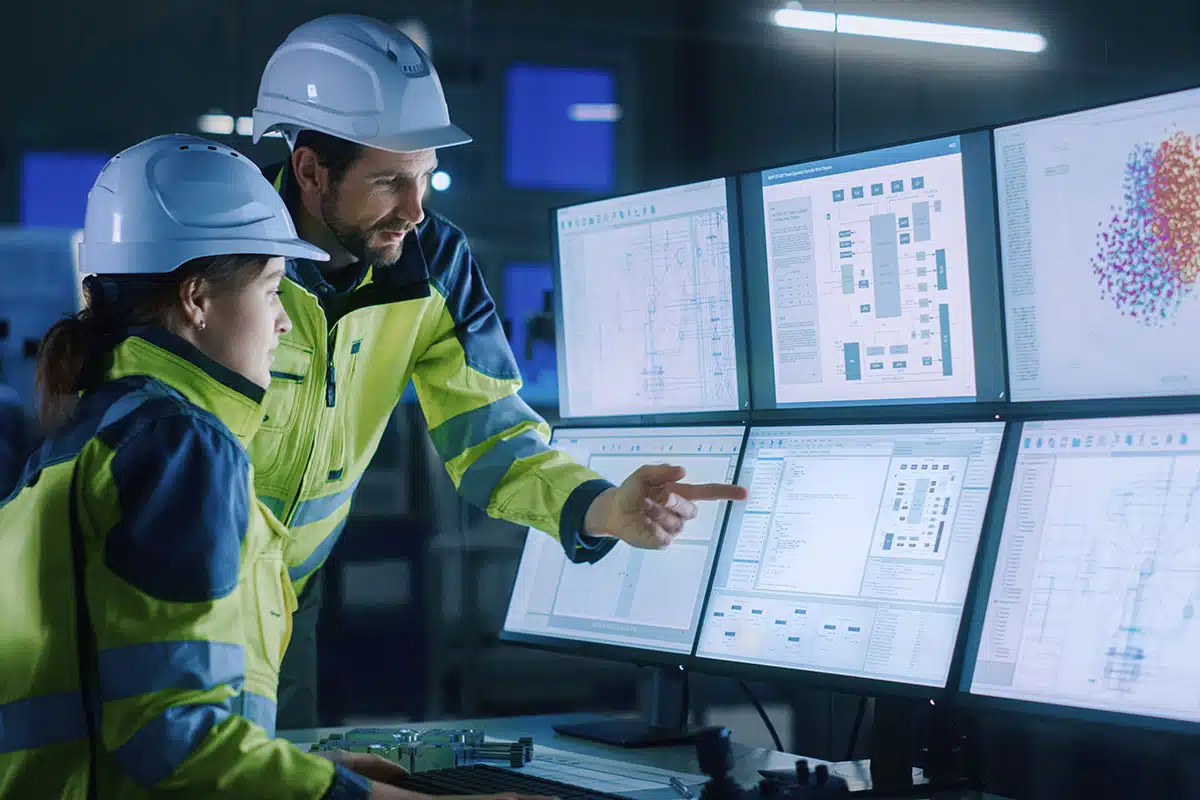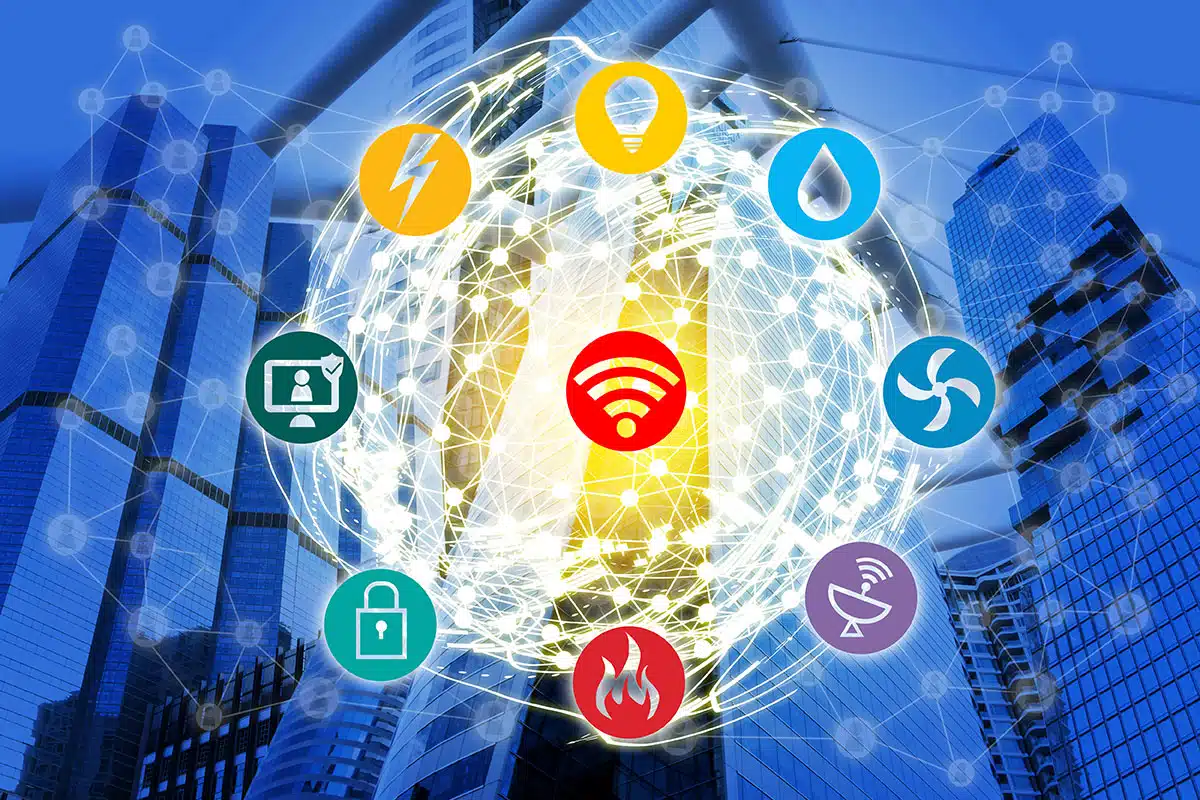In January 1983, Hartford, Connecticut became the site of the world’s first “intelligent building”—a 36-story, 1.3-million-square-foot behemoth aptly named “Cityplace.” Though rudimentary when compared to today’s smart buildings, at the time Cityplace represented a new era in building construction.
A New York Times article from that time describes how the building’s services were managed by a computer system and linked by a fiber-optic network—a trademarked system called a ”Data Highway”—that ran through its core.
“Functions such as heating, ventilation, lighting, transportation, security, fire protection and, most important, telecommunications and electronic office services will be integrated, providing economies in construction and management,” the article stated.
The new concept had its skeptics. In the NYT article, BOMA’s executive vice president was quoted as saying, ”They are still in the testing stage.”
But four decades later, it’s clear that the builders had the right idea. Today’s smart buildings incorporate the core principles of that first prototype—but are far more sophisticated, thanks to massive advances in technology that allow faster and seamless controls. And these innovations are saving business owners millions by creating efficiencies across multiple systems.
While HVAC and lighting savings are the best-known advantages of smart buildings, the fact that all systems can be monitored in real time results in additional operational efficiencies that can be significant money-savers.
What Are Smart Buildings?
Key features of smart buildings include energy efficiency through networked HVAC and lighting systems; automated management systems; data analytics to gain insights into a building’s performance and occupant behavior; connectivity and interoperability; enhanced safety and security systems; predictive maintenance through monitoring equipment in real time; and sustainability by reducing a building’s carbon footprint and overall environmental impact.
When Cityplace opened, the internet as we know it was still a decade off. Computer technology was much less robust. The sophisticated sensors, biometric devices, and other features commonly used today simply didn’t exist.
Now, of course, technology makes a wide array of functions possible that Cityplace designers could only dream of. Some commonly used technologies include:
Building Management Systems
These are the brains that make smart buildings possible. The building management system (BMS) is a control system that can be used to monitor and manage power consumption, HVAC performance, physical access into and within the building, and the status of fire safety systems, elevators, and lights.
A basic BMS consists of software, a server with a database, and smart sensors connected to a network. Sensors gather data and send it to the BMS, where it’s stored in a database. The data is analyzed and reported via dashboards; and if data falls outside the predefined conditions, the BMS will send notifications.
IoT Devices

The Internet of Things (IoT) consists of devices with sensors, processing ability, software, and other technologies that connect and exchange data with other devices and systems over the internet or other networks. The devices provide information to the BMS. Smart technology utilizing IoT and AI can increase energy efficiency by 30%, resulting in a payback period of fewer than 15 years.
Advanced HVAC Systems
These systems utilize energy-efficient components and intelligent controls to significantly reduce energy consumption. For example, sensors can detect which parts of the building are currently unoccupied and reduce heating and cooling to those areas. Conversely, the system can increase ventilation to areas where there are lots of people. By optimizing heating, ventilation, and cooling, these systems ensure that energy is used only when needed.
Smart Lighting
Smart lighting saves money by optimizing the use of natural light and turning off lights in unoccupied areas. It utilizes IoT sensors and advanced analytics to control light sources, enabling healthy illumination that varies according to individual preferences, occupancy, availability of daylight, and other factors.
Security Systems
By implementing access control through biometrics, portable cards, and advanced reporting, access control systems allow facility managers to properly track everyone who enters or exits the building. These advanced systems record the time of entry and departure, and the length of stay, ensuring that all those coming in and out of a building—or section of a building—are authorized to do so.
Benefits of Smart Buildings
While the biggest driver behind the rise of smart buildings is a desire for greater energy efficiency, there are numerous other benefits. These include improving the tenant and visitor experience, providing safer workplaces, and streamlining and optimizing maintenance.
Energy Efficiency
The biggest bang for the buck offered by smart buildings is saving money on heating and air conditioning. In traditional buildings, HVAC systems account for about 40% of total energy consumption. The U.S. Department of Energy reports that simply by adjusting temperatures as needed, a smart HVAC system can lower a building’s energy consumption by 5% to 35%, producing significant financial savings. And companies have indeed found this to be the case: Within 30 days of implementing a building automation system at one of its campuses, Microsoft realized $240,000 in energy savings.
Smart HVAC systems proactively manage energy consumption, reducing unnecessary cooling and heating and therefore significantly lowering energy costs. This intelligent approach not only enhances the efficiency of the system but also extends the lifespan of the HVAC equipment by preventing overuse.
Lighting uses the second-highest amount of energy in a commercial building, accounting for 15% to 20% of energy consumption. By utilizing sensors, the BMS can automatically adjust the amount of lighting in a room based on how much sunlight is available. And like a parent telling a kid to turn out the lights when leaving a room, the system automatically dims or shuts off the lights when a room is unoccupied.
Improved Occupant Comfort
Besides cost savings, a key benefit of smart buildings is enhanced occupant comfort and productivity. As companies work to meet return-to-office (RTO) goals, it’s become important to make places of work as pleasant as possible for staff when they’re onsite, so that the time they spend in the office is a positive experience.
Smart buildings make that possible because the building’s systems can adapt to individual preferences, providing customized lighting, temperature, and other settings for a personalized work environment. Smart building technology also allows desk space and meeting rooms to be booked efficiently, so that office space is maximized, and companies can realize operational savings from their hybrid work schedules.
Operational Efficiency
While HVAC and lighting savings are the best-known advantages of smart buildings, the fact that all systems can be monitored in real time results in additional operational efficiencies that can be significant money-savers. For example, Microsoft found that before the adoption of smart building technologies, their engineers were spending 80% of their time resolving acute management issues, and just 20% in their true capacity as engineers. That changed after the implementation of new monitoring and remote-control technologies—subsequent analysis showed that 48% of the issues identified could be resolved within 60 seconds, a major saving of staff time.
Safety and Security
Having a security guard and a surveillance camera at a building’s main entrance is no longer enough. Today, building security measures include automated visitor check-ins and access control, motion sensors, smart locks, cameras with live monitoring, and AI facial recognition. Building managers can also receive real-time updates on the status of fire alarms, suppression systems, and emergency lighting, enabling swift responses when needed. Cybersecurity protections have also become more common, as the increased connectivity of the IoT has made buildings more vulnerable to attack.
Maintenance Optimization
An important benefit of IoT is that it makes predictive maintenance possible. This prevents malfunctions, keeps small issues from becoming big problems, and significantly reduces the cost of managing real estate assets—while improving the tenant experience. A 2017 study found that predictive maintenance reduced downtime by 35%, unplanned outages by 70%, and costs by 25%. This innovative data-driven approach can transform the upkeep of buildings.
Smart building technology also makes it easier to fix problems as they occur. For instance, if a leak is detected or an HVAC unit has been running for an abnormal amount of time, management is notified, and maintenance personnel can be dispatched quickly to take corrective measures before problems escalate. This proactive approach minimizes downtime and reduces the need for reactive repairs, which can lead to exponentially higher costs.
Moreover, smart building solutions facilitate remote monitoring and control, which gives maintenance teams the ability to manage and troubleshoot systems from a centralized location. Through web-based platforms or mobile applications, technicians can diagnose problems, adjust device settings, and perform routine maintenance tasks without the need to be onsite. Not only does this remote accessibility save time, resources, and labor costs, it also enables teams to respond quickly to emergencies and ensures minimal disruption to building occupants.
As technology continues to advance, the role of smart building solutions in optimizing efficiency for onsite maintenance teams will only grow. By leveraging real-time monitoring, remote diagnostics, and data-driven decision-making, owners can ensure their buildings are operating at peak performance.
The Future of Smart Buildings
Of course, smart building design is evolving along with the technology that drives it. As more devices become connected, and AI capabilities improve, smart building architecture will offer even more innovative solutions for sustainable, efficient, and comfortable working spaces. For example, keycards could be replaced with apps on smartphones and smartwatches or by biometrics. Other key technologies that will shape the office building of the future could include:
IoT-Connected Heat Pumps
These systems can both cool and heat buildings, moving around liquid refrigerants to remove or add heat in a process that can reduce energy consumption by 50% compared to standard heating and cooling systems. Coupled with IoT sensors, these high-tech pumps also enable customized temperature control, allowing rooms to be heated or cooled on demand.
IoT sensors can further improve efficiency by leveraging AI models that actively predict where and when heating or cooling is needed, based on historical trends. AI offers the opportunity to turn HVAC systems from a reactive technology into a proactive one, reducing equipment upkeep.

Virtual Power Plants
Heat pumps with IoT sensors, coupled with local energy-generating resources like rooftop solar panels and battery storage systems, could supply electricity back to the power grid during periods of peak demand. As a result, buildings themselves can act as “virtual power plants,” generating revenue by capitalizing on control of energy usage.
Smart Glass
Soon, more than a quarter of heating and cooling for buildings may go out the window—literally. Smart glass makes this possible by changing the level of tint, or how much light can pass through a window. There are two methods for doing so.
Active smart glass uses a film placed on top of the window to react to the presence of electrical voltage. This enables the glass to change the polarization of the film, resulting in the blocking of more or less sunlight. The glass is hooked up to a power source and can be switched on or off as well as dimmed.
Passive smart glass has a film that reacts to heat or UV/visible light to change polarization. This technology, which is also used for transition lenses, has the benefit of not requiring an external power source. And soon, more advanced smart windows could generate electricity while delivering 30% more energy savings than the smart windows now on the market.
AI-Assisted Occupancy and Security Tech
Advances in AI and computing power have improved security by better detecting and classifying images. Known as computer vision, this technology identifies and analyzes visual data the same way humans do, and can be paired with conventional security technologies, such as metal detectors and thermal screening, to help security personnel identify objects faster.
Digital Twins
A digital twin is a virtual representation of a real object or set of objects, constructed with real-world data collected from IoT sensors. After an initial model is created, digital twins undergo simulations to provide performance feedback under various scenarios without having to test the actual system that’s being modeled.
For example, a manager overseeing an office building’s HVAC system may want to know how much energy savings they’ll see by upgrading to a new heat pump. Using data from IoT sensors that measure temperature and humidity, as well as energy consumption data for the current HVAC system, the building manager can construct a digital twin and run heat pump simulations that compare the current and potential HVAC systems, and so determine if it’s worth the cost to upgrade.
Will these advances all come to pass? Only time will tell. But one thing is clear: Smart buildings are poised to revolutionize how we live and work.
